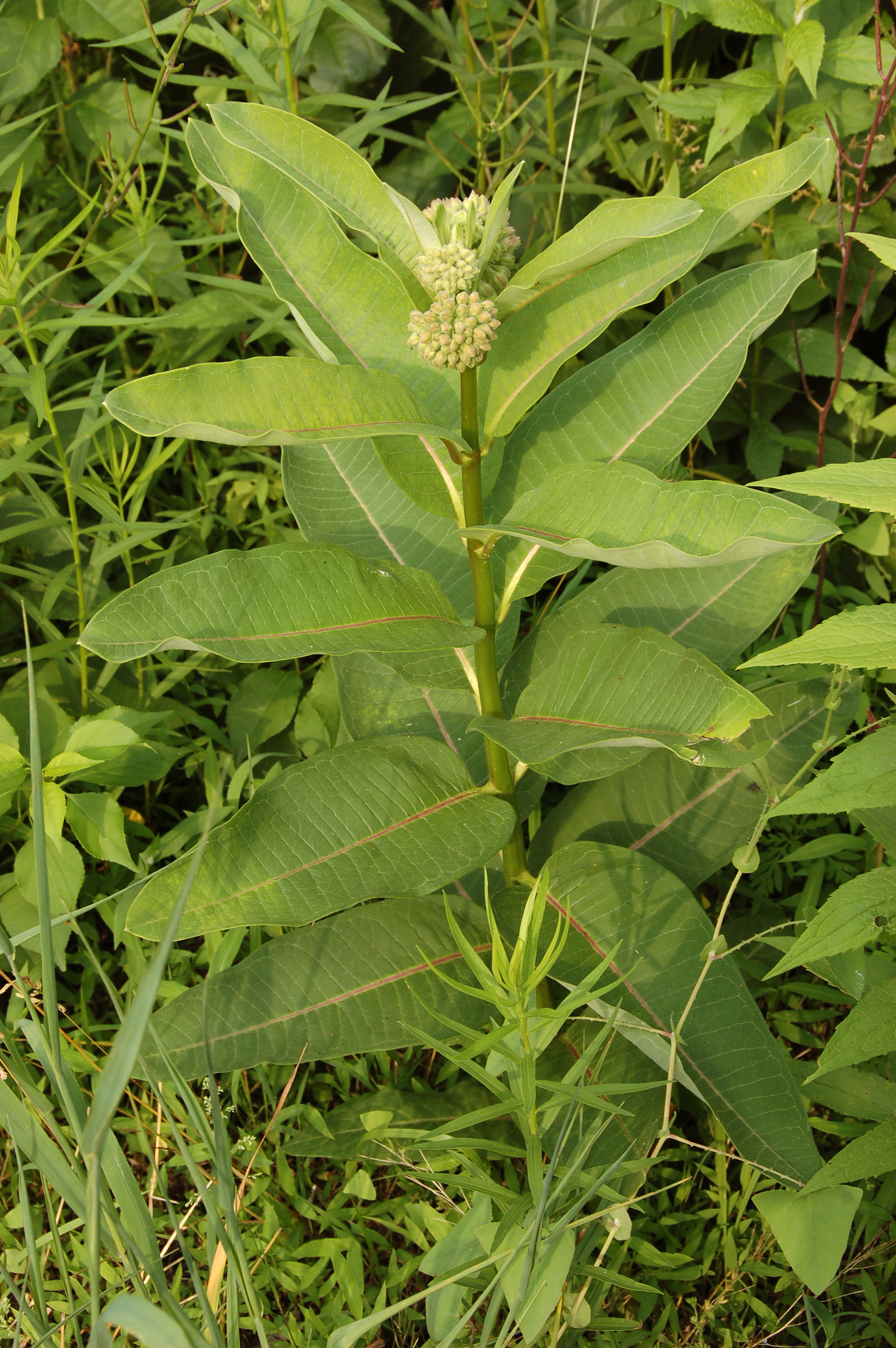- Common Milkweed
Taxobox
name = Common Milkweed

image_width = 240px
regnum =Plantae
divisio = Magnoliophyta
classis =Magnoliopsida
ordo =Gentianales
familia =Apocynaceae
subfamilia =Asclepiadoideae
genus = "Asclepias "
species = "A. syriaca"
binomial = "Asclepias syriaca"
binomial_authority = L.Common Milkweed (Butterfly flower, Silkweed, Silky Swallow-wort, Virginia Silkweed;"Asclepias syriaca") is a species of
milkweed , native to most ofNorth America east of theRocky Mountains , with the exception of the drier parts of thePrairies . It grows insand ysoil s and appreciates lots ofsunlight . It was one of the earliestNorth America n species described in Cornut's1635 "Canadensium plantarum historia ". The specificepithet was reused by Linnaeus due to Cornut's confusion with a species fromAsia Minor .Common milkweed is a
herbaceous perennial plant growing from arhizome to 1-2 m tall. The stem is very hairy, and all parts of the plants produce a whitelatex when broken. The leaves are opposite, simple broad ovate-lanceolate, 7-25 cm long and 3-12 cm broad, usually with an undulatemargin and a red-colored mainvein . They have a very short petiole and a velvety underside.The
flower s are grouped in several sphericalumbel s with numerous flowers in each umbel. The individual flowers are small, 1-2 cm diameter, perfumed, with five cornate hoods. Theseed s are attached to long, white flossy hairs and encased in large follicles.Uses
The plant's latex contains large quantities of
glycoside s, making the leaves and pod barktoxic forsheep , and potentially humans (though large quantities of the foul-tasting parts would need to be eaten). The youngshoot s, youngleaves , flowerbud s and immaturefruit s are all edible, however it is important to make sure that they are thoroughly and completely cooked before eating them; otherwise they are still toxic. It is important not to confuse young shoots with those of the toxic Spreading Dogbane and Common Dogbane.Failed attempts have been made to exploit
rubber (from thelatex ) andfiber (from the seed'sfloss ) production from the plant industrially. The floss was nonetheless used forstuffing . However, the plant has been explored for commercial use of its bast (inner bark) fiber which is both strong and soft.U.S. Department of Agriculture studies in the 1890s and 1940s found that Milkweed has more potential for commercial processing than any other indigenous bast fiber plant, with estimated yields as high ashemp and quality as good asflax . Both the bast fiber and the floss were used historically by Native Americans for cordage and textiles.The flowers often constitute small traps for insects who cannot take off again. Several
insect s live off the plant, including theMonarch Butterfly ("Danaus plexippus"), theMilkweed Beetle ("Tetraopes tetraophtalmus"),Small Milkweed Bug ("Lygaeus kalmii") andMilkweed Leaf Beetle ("Labidomera clivicollis").Deforestation due to European settlement may have expanded the range and density of milkweed. The plant can become invasive and often acts as a
weed . It is naturalized in several areas outside of its native range, includingOregon and parts ofEurope .Gallery
References
* [http://plants.usda.gov/java/profile?symbol=ASSY Common Milkweed page] from the [http://plants.usda.gov/ Natural Resources Conservation Service Plants Database]
*
*
*
*
Wikimedia Foundation. 2010.
